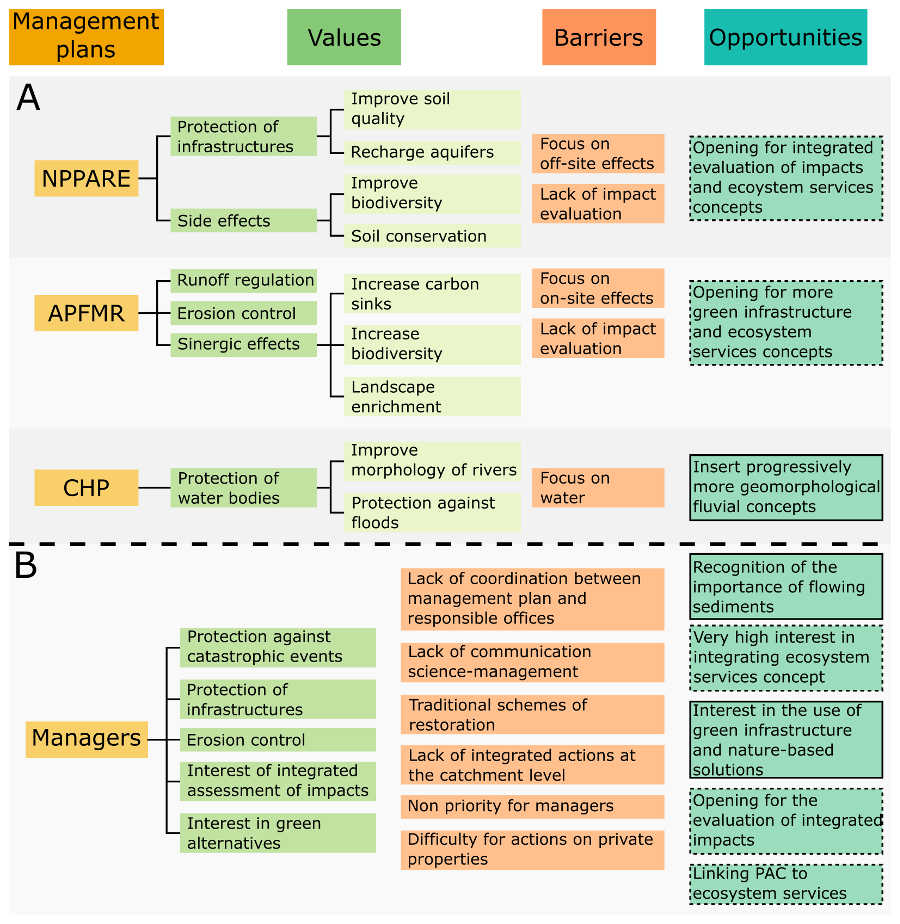
The use of check-dams in mountain environments to regulate fluxes of water and sediments is widely applied across Mediterranean mountains. Besides the use of “grey infrastructures” such as check-dams, other restoration and hydrological control measures rely more on the use of “green infrastructures” or “nature-based solutions” (e.g. reforestation, buffer lines) or a combination of both types of measures. It is widely accepted that both are complementary, and that prioritization should be based on economic, ecological and cultural criteria. This paper brings together all the knowledge generated during more than one decade concerning the impact of land use changes, reforestation, and hydrological control works on several ecosystem services in a representative Mediterranean catchment. The work evaluates different management scenarios aiming to optimize provision of ecosystem services in the area. The study area is a medium-sized catchment (∼300 km2) in Southeast Spain, representative of Mediterranean mountains that experienced agricultural land abandonment, greening up, and restoration works in the second half of the twentieth century. The methods combined: (i) previous research results for the area that were organized in an ecosystem services framework, providing data for three representative scenarios of catchment management; (ii) the use of value content analysis of the existing management plans for the area to understand the view of the managers; and (iii) a multicriteria analysis of the management scenarios to determine the most sustainable scenario to optimize different ecosystem services. The results of the evaluation were later validated with the stakeholders (technicians and managers involved in the management plans) through interviews. Our results show that solutions that respect landscape and ecological dynamics are more sustainable and cheaper in the medium and long term than scenarios based on “grey infrastructures”, although the latter could have more desirable short-term impacts. The value analysis reflects how there are some concepts, such as ecosystem services, that could easily be further incorporated into several management plans. When choosing a management scenario, this needs to be adapted to the local environmental conditions and to the specific objectives of the restoration works. Tailor-made management scenarios taking into account two factors (local conditions and specific management objectives) can optimize resources and achieve medium to long-term sustainability.